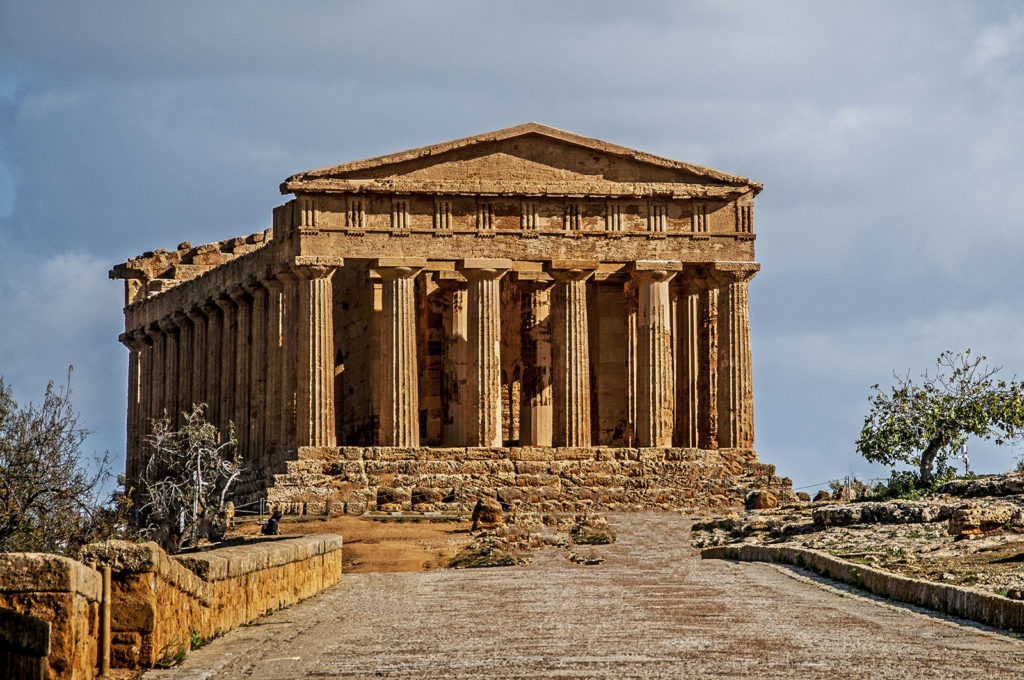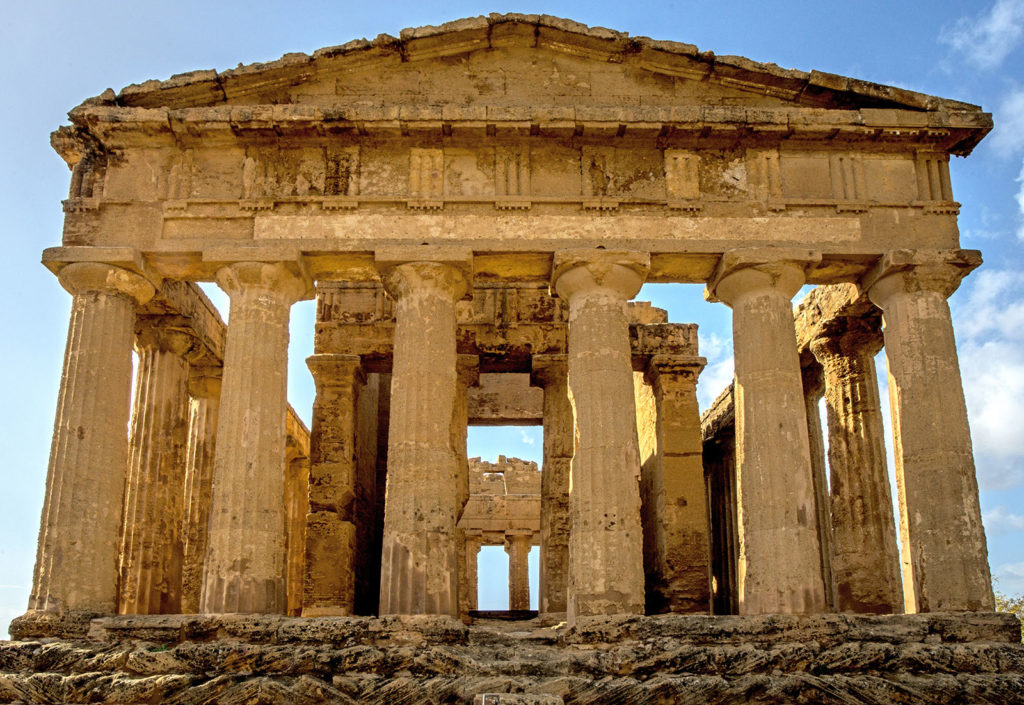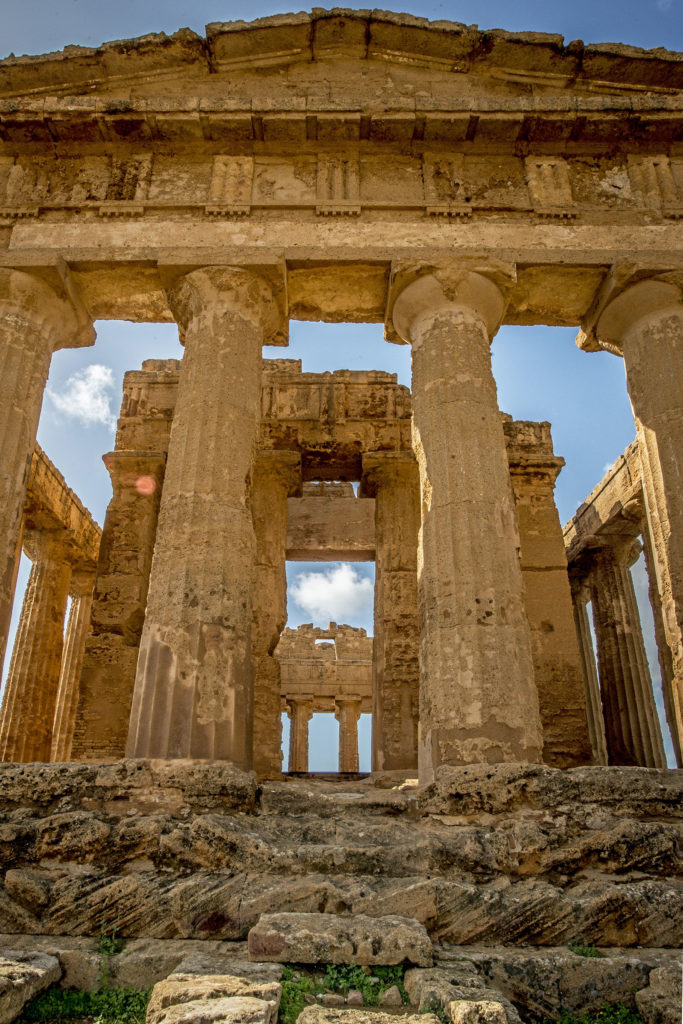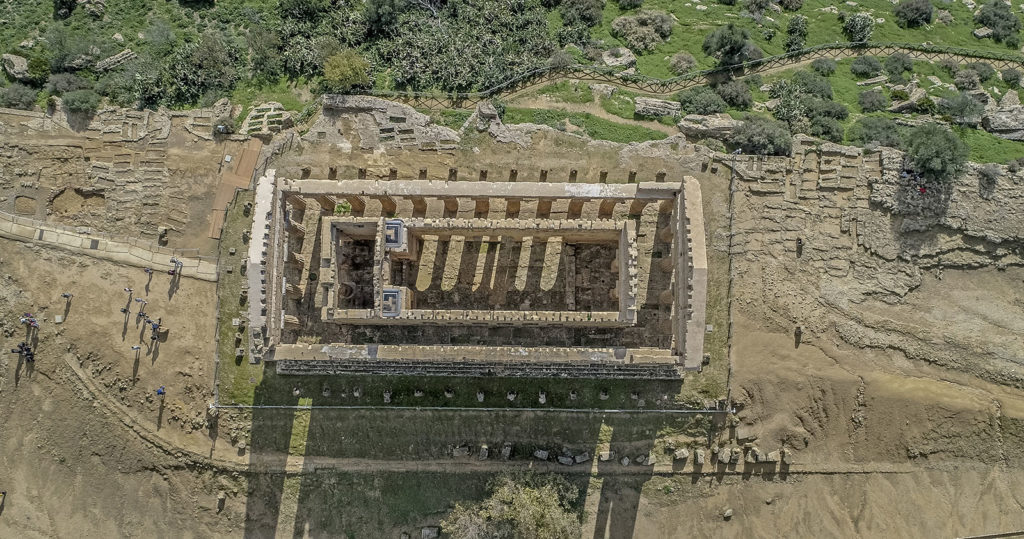The Temple of Concordia is one of the best preserved temples from Greek antiquity. The building, of Doric order, dates back to 440-430 BC. Its spectacular state of preservation is due to its transformation into a Christian church around the 6th century AD; its name, however, was
incorrectly attributed
.

The temple was probably dedicated to a couple of Greek gods who some unsubstantiated hypotheses identify as the Dioscuri, Castor and Pollux.

The Temple of Concordia measures 40 metres long by 17 metres wide. Though it does not have the colossal dimensions of the Temple of Olympian Zeus, it is the only one of the temples in the Valley to have its two
pediments
and the elements of the
trabeation
almost entirely preserved .
 These are supported by six columns on the short sides and thirteen on the long ones, which rest on a
basement
These are supported by six columns on the short sides and thirteen on the long ones, which rest on a
basement
of four steps.
The interior was divided into three rooms: the
pronaos
, the cella (shrine) and the
opisthodomos
.Next to the entrance to the cella, the stairs leading to the roof are still preserved.

Like the other sacred buildings, the Temple of Concordia was richly decorated with bright colours. The columns were covered with white stucco, while the trabeation had plant elements and geometric designs painted green, red and blue. As per tradition, the
metopes
were painted with mythological scenes, and the roof was covered with marble tiles! Inside, in the upper part of the structure, the recesses on the wall where the roof beams were inserted are still preserved.
There is a sheepfold near the temple that is home to some
Girgentana goats
.